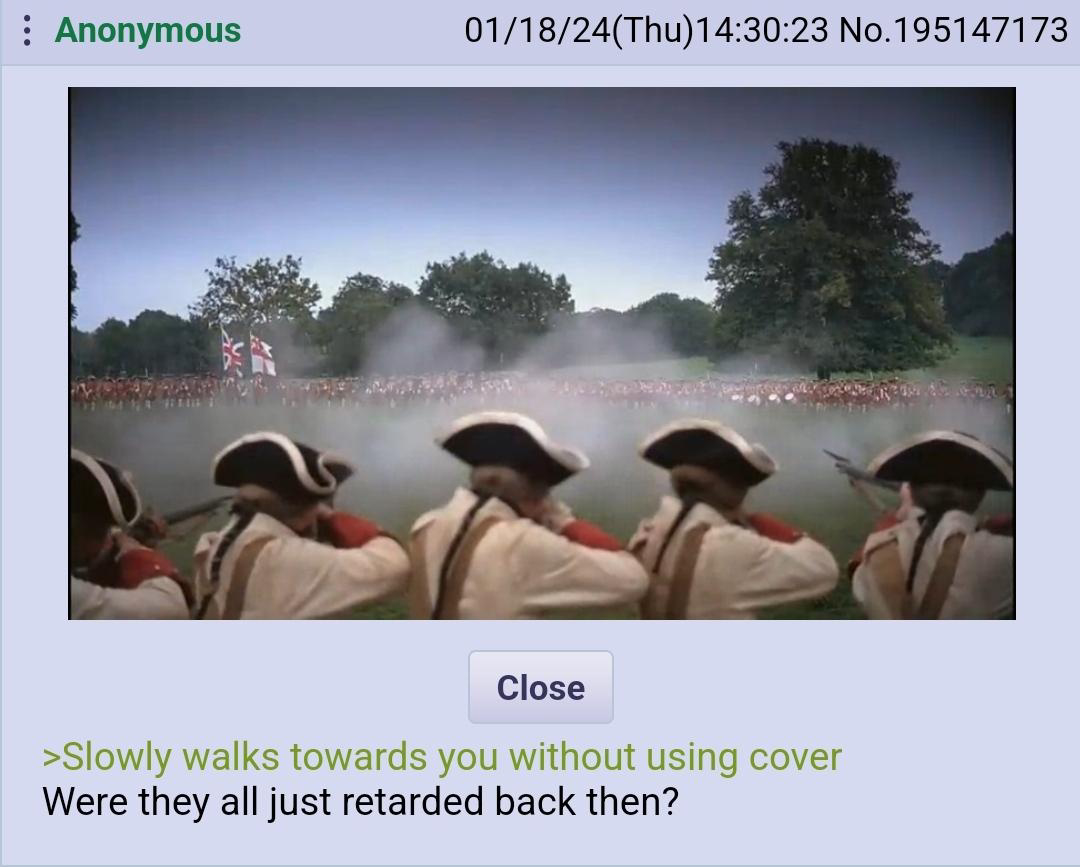this post was submitted on 19 Feb 2024
531 points (97.3% liked)
Greentext
4375 readers
1787 users here now
This is a place to share greentexts and witness the confounding life of Anon. If you're new to the Greentext community, think of it as a sort of zoo with Anon as the main attraction.
Be warned:
- Anon is often crazy.
- Anon is often depressed.
- Anon frequently shares thoughts that are immature, offensive, or incomprehensible.
If you find yourself getting angry (or god forbid, agreeing) with something Anon has said, you might be doing it wrong.
founded 1 year ago
MODERATORS
you are viewing a single comment's thread
view the rest of the comments
view the rest of the comments

Coordination is essential to any military action. The better you can coordinate your actions, the greater the objectives you can achieve.
When your ability to coordinate is limited to the distance that people can hear a drum or a trumpet, you're not capable of coordinating across any area larger than a few city blocks. You're a sitting duck against any massed troops, unless you also mass enough troops to stop them from marching right through you.
Small unit tactics are largely ineffective against massed troops until the invention of the telegraph, 30-40 years after the revolution.
They didn't use guerrilla tactics against massed formations. They used them against the British supply lines, and they were effective at it.
Then there was wireless, and that makes me think of the French or Dutch Resistance during WWII - units of even just one individual.
Yep. Trench warfare was a thing because effective communication was only possible through wires, and wires required fixed locations. Defense could be effectively coordinated, but advancing more than a couple thousand yards put attackers out of communication with commanders.
People like to argue that armored vehicles put an end to trench warfare, but it wasn't really the armor or the vehicle. It was the radio carried inside those vehicles that allowed units to coordinate their attacks.